مقدمة
Bulldozers are a cornerstone of the construction and earthmoving industries, providing the power and versatility needed to handle a variety of tasks, from land clearing to grading and excavation. Maximizing productivity in bulldozer work is essential for completing projects efficiently and cost-effectively. This comprehensive guide explores strategies and tips to enhance bulldozer productivity, ensuring that operators and project managers can achieve optimal performance.
Understanding Bulldozer Work

What is Bulldozer Work?
Bulldozer work encompasses a range of tasks performed by bulldozers, which are powerful tracked machines equipped with a large front blade. These tasks include:
- Land Clearing: Removing trees, shrubs, and debris from construction sites.
- Excavation: Digging and moving large quantities of earth.
- Grading: Leveling the ground to prepare for construction.
- حفر الخنادق: Creating ditches for utilities and drainage.
- Backfilling: Replacing and compacting soil after excavation.
Importance of Bulldozer Work in Construction
Bulldozers play a critical role in construction projects by providing the necessary muscle to move earth and clear land. Their versatility and power make them indispensable for preparing sites, shaping landscapes, and supporting infrastructure development.
Key Factors Affecting Bulldozer Productivity
Operator Skill and Training
The skill and training of the bulldozer operator significantly impact productivity. Experienced operators can execute tasks more efficiently, minimize fuel consumption, and reduce wear and tear on the machine.
Training Programs
- Certification Courses: Formal training programs that cover operational techniques, safety protocols, and maintenance practices.
- On-the-Job Training: Practical experience under the guidance of seasoned operators.
Machine Maintenance and Condition
Regular maintenance and proper care of the bulldozer ensure that it operates at peak efficiency. Neglecting maintenance can lead to breakdowns, reducing productivity and increasing repair costs.
Maintenance Checklist
- Daily Inspections: Check fluid levels, tire pressure, and track tension.
- Regular Servicing: Follow the manufacturer’s recommended service schedule for oil changes, filter replacements, and component inspections.
- Timely Repairs: Address any issues promptly to prevent further damage and downtime.
Site Preparation and Planning
Proper site preparation and planning are crucial for maximizing productivity. This involves assessing the terrain, understanding the project requirements, and planning the most efficient workflow.
Site Assessment
- Surveying: Conduct a thorough survey to identify obstacles, elevation changes, and soil conditions.
- Clearing Obstacles: Remove any debris or structures that could impede progress.
- Mapping Routes: Plan the most efficient paths for the bulldozer to minimize travel time and fuel consumption.
Equipment Selection and Configuration
Choosing the right bulldozer and configuring it correctly for the task at hand is essential for maximizing productivity. Factors to consider include the size and power of the bulldozer, the type of blade, and any additional attachments.
Equipment Considerations
- Bulldozer Size: Select a bulldozer that matches the scale of the project.
- Blade Type: Use the appropriate blade for the task, such as a straight blade for grading or an angle blade for pushing materials.
- المرفقات: Consider additional attachments like rippers for breaking up hard ground or winches for pulling heavy objects.
Fuel Efficiency and Management
Effective fuel management can significantly impact operating costs and productivity. Strategies to improve fuel efficiency include optimizing machine settings, reducing idle time, and maintaining consistent operating speeds.
Fuel Management Tips
- Eco Mode: Utilize fuel-saving modes available on modern bulldozers.
- Reduce Idling: Turn off the engine during extended breaks to save fuel.
- Consistent Speed: Maintain a steady operating speed to reduce fuel consumption.
Table: Comparison of Bulldozer Blade Types
| Blade Type | وصف | Best Uses | Limitations |
|---|---|---|---|
| Straight Blade | Flat blade with no curvature or side wings | Grading, backfilling, and spreading | Limited capacity for carrying material |
| Angle Blade | Blade that can be angled left or right | Pushing material to the side, clearing | Less effective for straight pushing tasks |
| U-Blade | Curved blade with side wings | Moving large volumes of material, dozing | Reduced versatility compared to straight blade |
| Semi-U Blade | Combination of straight and U-blade features | Versatile for both pushing and carrying | Not as specialized as straight or U-blades |
Strategies to Maximize Productivity in Bulldozer Work

Optimize Operating Techniques
Improving operating techniques can lead to significant gains in productivity. Operators should focus on techniques that enhance efficiency and minimize wear on the machine.
Efficient Dozing Techniques
- Slot Dozing: Creating slots or trenches to guide material and reduce spillage.
- Blade Load Management: Maintaining an optimal load on the blade to avoid overloading and spillage.
- Minimizing Reversals: Planning movements to reduce the number of times the bulldozer needs to reverse.
Leverage Technology and Automation
Modern bulldozers are equipped with advanced technology that can enhance productivity. Utilizing these features can streamline operations and improve accuracy.
Technological Enhancements
- GPS and Machine Control Systems: Use GPS technology for precise grading and excavation.
- Telematics: Monitor machine performance and fuel usage in real-time to optimize operations.
- Automation: Implement semi-autonomous features to reduce operator fatigue and improve consistency.
Implement Efficient Workflow Practices
Organizing workflow practices to minimize delays and maximize continuous operation can lead to higher productivity.
Workflow Optimization
- Task Sequencing: Plan the sequence of tasks to minimize idle time and machine movement.
- Team Coordination: Ensure effective communication and coordination among the team to streamline operations.
- Material Management: Organize material placement to reduce the distance the bulldozer needs to travel.
Regular Training and Skill Development
Ongoing training and skill development for operators are crucial for maintaining high productivity levels. Regularly updated training programs can keep operators informed about the latest techniques and technologies.
Training Initiatives
- Advanced Operator Training: Offer advanced courses focusing on new technologies and efficient techniques.
- Safety Training: Regularly update safety training to prevent accidents and injuries.
- Performance Reviews: Conduct performance reviews and provide feedback to operators for continuous improvement.
Conclusion: Bulldozer Work
Maximizing productivity in bulldozer work requires a multifaceted approach that includes operator training, regular maintenance, proper equipment selection, and effective site planning. By implementing the strategies and tips outlined in this guide, construction managers and bulldozer operators can enhance efficiency, reduce operational costs, and achieve better project outcomes. Investing in technology and continuous training further ensures that productivity remains high and bulldozer work is completed efficiently.
التعليمات
What is the most important factor in maximizing bulldozer productivity?
The most important factor in maximizing bulldozer productivity is the skill and training of the operator. Experienced operators can perform tasks more efficiently, reduce fuel consumption, and minimize wear and tear on the machine.
How often should bulldozers be maintained to ensure optimal performance?
Bulldozers should be maintained regularly according to the manufacturer’s recommended service schedule. Daily inspections, regular servicing, and prompt repairs are essential to ensure optimal performance and prevent breakdowns.
What technologies can improve bulldozer productivity?
Technologies that can improve bulldozer productivity include GPS and machine control systems, telematics for real-time monitoring, and semi-autonomous features that reduce operator fatigue and improve accuracy.
How can fuel efficiency be improved in bulldozer operations?
Fuel efficiency can be improved by using eco modes available on modern bulldozers, reducing idle time, maintaining a consistent operating speed, and optimizing machine settings for the task at hand.
What are the benefits of using the right blade type for bulldozer work?
Using the right blade type for bulldozer work enhances efficiency and effectiveness. For example, straight blades are best for grading and backfilling, angle blades for pushing material to the side, and U-blades for moving large volumes of material.


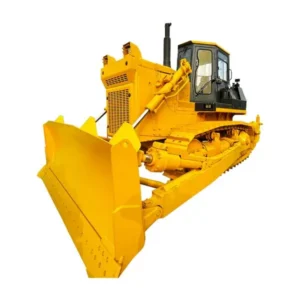
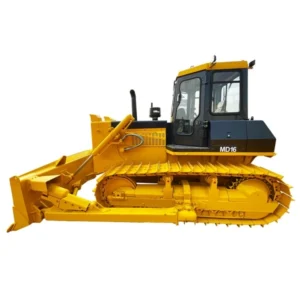
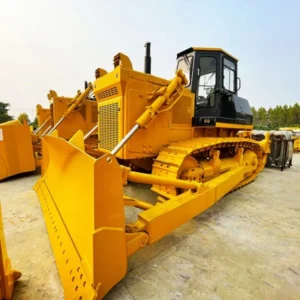
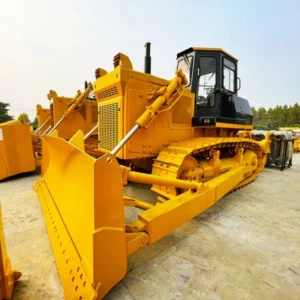
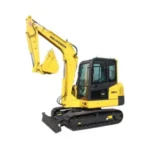

-150x150.webp)
